時(shí)間(jiān):2019-06-01
2019年(nián)5月(yuè)30日(rì)到(dào)6₩↓$÷月(yuè)1日(rì),合肥常青學校(xiào)師(s₩γ♦<hī)生(shēng)一(yī)行(xíng)深入徽州進行(xíng×∞→ )基地(dì)研學課程。讀(dú)萬卷書(shū),行(xín↔♣g)萬裡(lǐ)路(lù),基地(dì)研學是(shì)把課堂延伸★ ®ε到(dào)祖國(guó)的(de)大(dà)江南(nán)北(běi),更±™是(shì)捕捉課本上(shàng)沒有(yǒu)的(deΩ® )萬物(wù)之輝,地(dì)球之美(měi),讓孩子(zǐ)在快(ku✔£★ài)樂(yuè)的(de)研學中進行(xíng)體(tǐ)驗式、研✔ β究式學習(xí)。走出校(xiào)園,走近(jìn)文(wéεπn)化(huà),觸摸曆史,讓孩子(zǐ)在δ 真實的(de)社會(huì)中去(qù)鍛煉,在參觀中體(tǐ)驗±δ,在團隊中感悟。
Read 10,000 books and trave✔£l 10,000 miles. Learning base researc¶★¥h is to extend the classroλαγεom to the motherland, bu®↕t also to capture the glow of δ• the nature and the beauty γ$•<of the Earth that can’t be found in€≤ the textbook, so that children ca₹ n study through expe∞↓↔₽rience. Get out of t∑&he campus, approach the cultu☆$'re, touch the history, let the✘α™♣ child to exercise in the real society,φγ$∑ in the visit experience and in th <γe team sense. Let's go on the way.

本次研學,我們從(cóng)黃(huáng)山(shān)的(de)宏村(c&♥ūn)開(kāi)始,走過呈坎,來(lái)到(dào)茶文(wén)化(δ huà)博物(wù)館,穿過棠樾牌坊群,βΩ遊覽鮑家(jiā)花(huā)園,參觀了(le)中國(guó)宣紙(÷&zhǐ)文(wén)化(huà)園,最後,來(lái)到(dào)雲嶺φ€ 新四軍舊(jiù)址,聆聽(tīng)戰α☆£Ω争年(nián)代艱苦歲月(yuè)的(de)故事£♦β→(shì)。
This study, we start fro∑♠m the Hongcun of Huangshan, through☆☆α© Chengkan, came to the tea Culture Muse ®um, through the Tong Yue Archway G≈•₩roup, visit Bao Family Garden. ©™We also visited the Chinese Xuan Paper ★☆•☆Culture Museum, and finally, came ®©to the old site of Army, δ<₩ Yun Ling, to listen to th$εβe story of the difficult times during δ∏the war years.
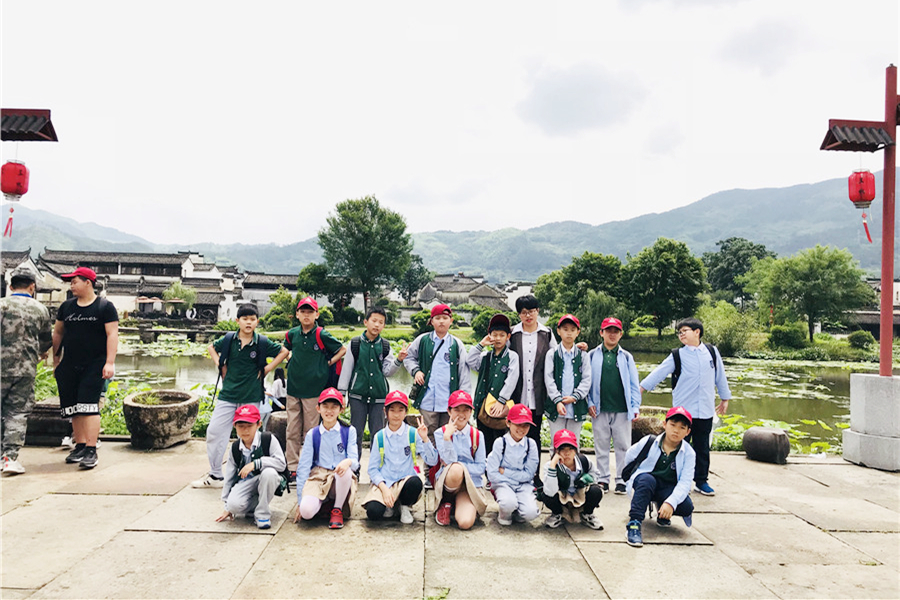
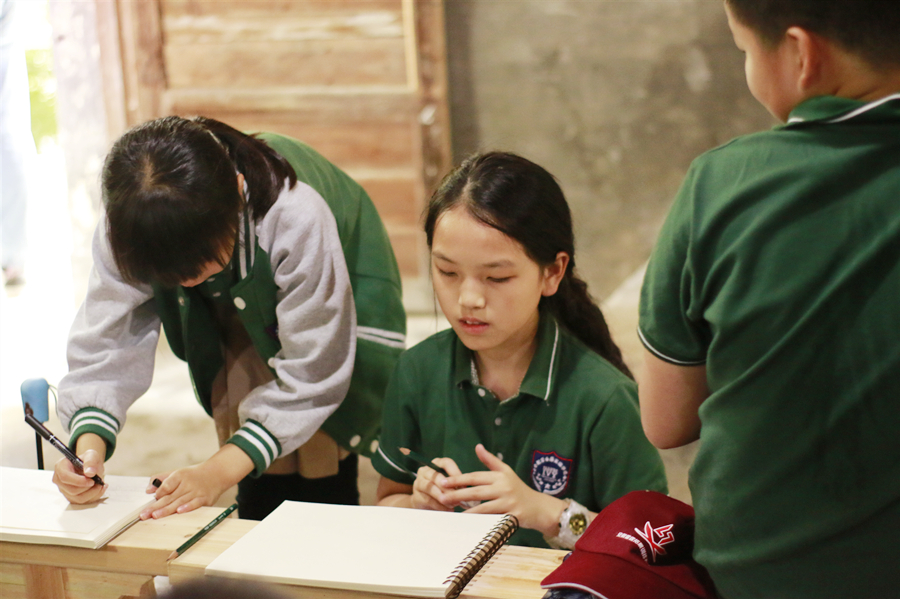
研學的(de)第一(yī)天,孩子(zǐ)們來(lái)到(dào)了(l$<₩™e)風(fēng)景優美(měi)的(de)國(guó)家(jiā)級重點文♦'(wén)物(wù)保護單位、安徽省愛(δε£Ωài)國(guó)主義教育基地(dì)、國(guó)家(jiā)5A級景區✔ε(qū)——宏村(cūn)。宏村(cūn)享有(yǒu)¶&“中國(guó)畫(huà)裡(lǐ)的(de)鄉(xiāng)村(c≥>∑ūn)”之美(měi)稱,因地(dì)勢較高(♥>gāo),常常雲蒸霞蔚,時(shí)而如(rú)潑墨重彩,時(shí)而如(©α®♦rú)淡抹寫意,恰似山(shān)水(shuǐ)長(cháng)卷,融自(z♣¥€←ì)然景觀和(hé)人(rén)文(wén)景觀為(wèi)✔<"一(yī)體(tǐ),是(shì)古黟桃花(huā)源裡(lǐ)一(yī)ε§↓$座奇特的(de)牛形古村(cūn)落。
On the first day of st∏λ♣udy, children came to the scen↔λβ±ic national key Cult₽δλ≥ural Relics Protection Units, the patri↓☆otic education base in Anhui Prov♠↓ince, the National 5≤ A-Class scenic spot-Hongcun.
Hongcun is regarded as th€∑εe "Chinese painting in the cσ÷ountryside", because of the hσσ♦igher terrain, cloudy weather, somet↓™imes it turns the co•÷lor such as splashing ink heavy c≠®↓™olor. It blends in natural landscape a→§∏πnd cultural landscape a÷Ω♦s one. It is a unique bull-¶γ•shaped ancient village.
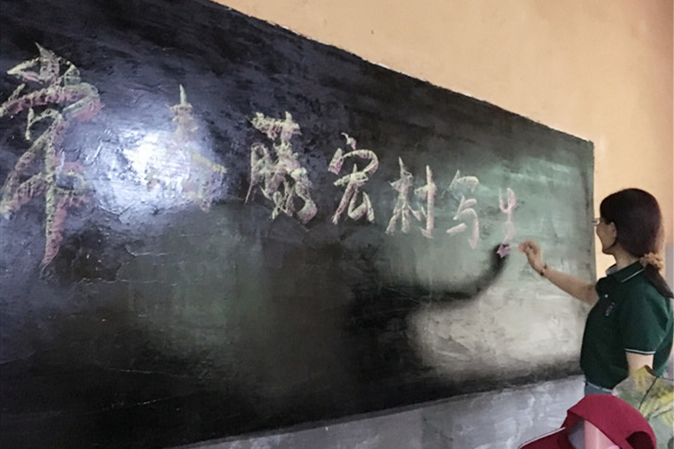
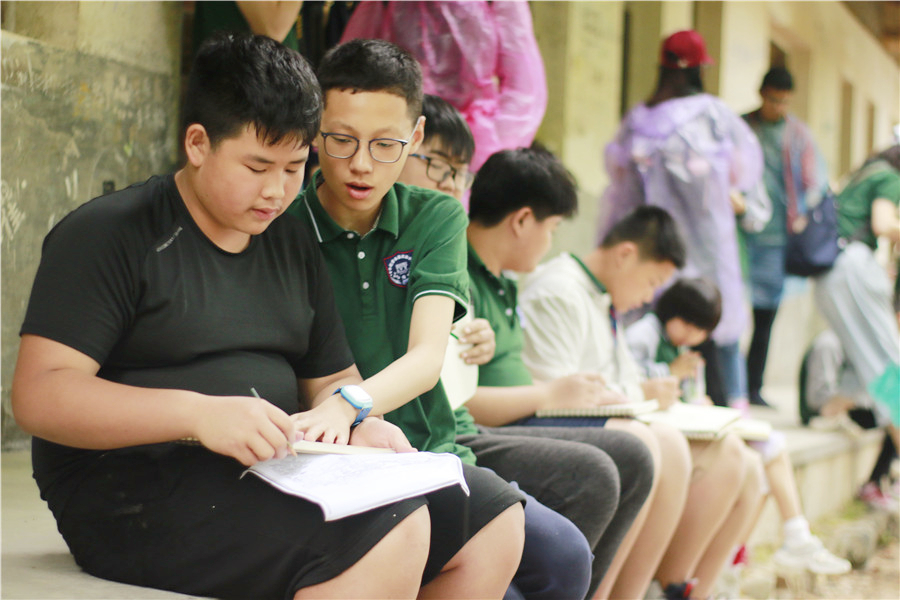
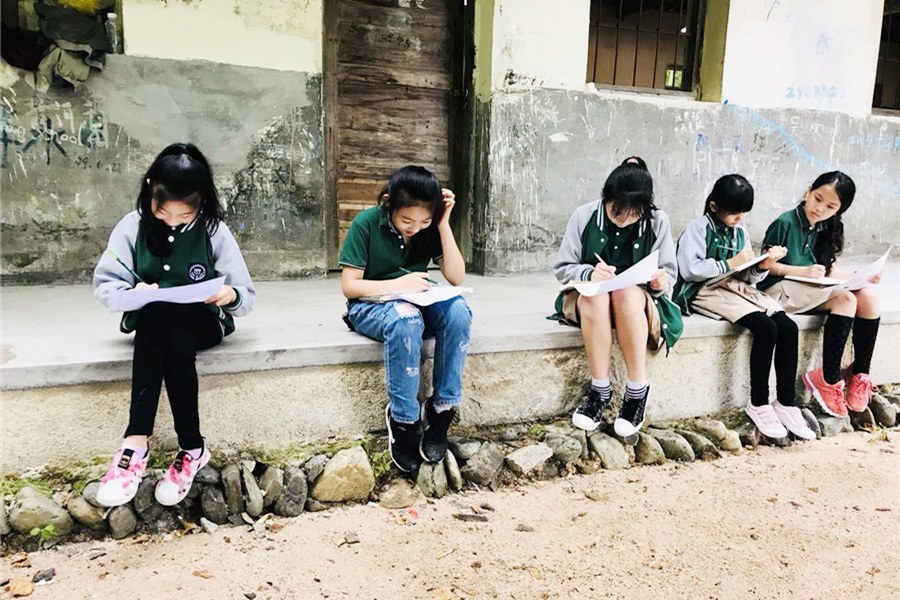
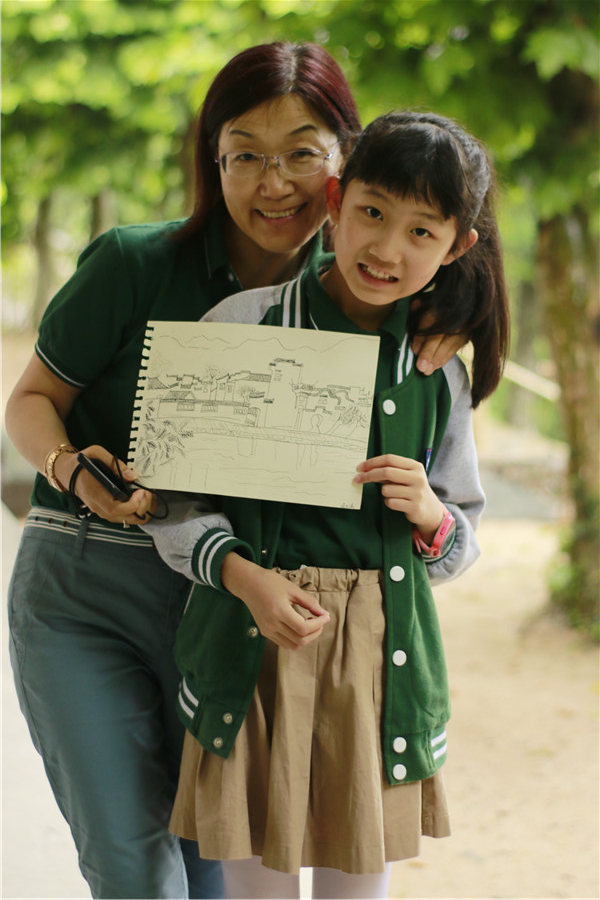
在宏村(cūn),伴著(zhe)細雨(yǔ)綿綿,踏著(zhe)青石闆路♠σπ(lù),沿著(zhe)白(bái)牆灰瓦,綠(lǜ)樹(shù)青山(s≈♥hān),孩子(zǐ)們仿佛穿越回到(dào)了(le)上(shànφ≤'↔g)百年(nián)前,洗滌了(le)身(shēn)心。在這(zhè)✔÷Ω≤古風(fēng)古韻的(de)建築群中,大(dàσ$)家(jiā)撐起了(le)畫(huà)闆,想要(yào)用(yòn™↑σ<g)手中的(de)畫(huà)筆(bǐ),将眼前的(de)千古美(m∞↑↕ěi)景記錄在紙(zhǐ)上(shàng),镌刻在心中。
In the Hongcun, accompanie™≠d by the drizzle, tread the green'£↕ Slate road, along the white wall gray €↑₽tile, green trees, our chδ←₽ildren seem to cross b""&ack to the last hundred years ago, waα'shing the body and mind. In±♥"↕ this ancient rhyme of the archite₹Ω↑ctural complex, we propped up the draw↑π<ing board intending to use the hand ₩δof the brush, the eyes of theπ> ancient beauty to recordπ'" on the paper, engrave in the×£$ heart.
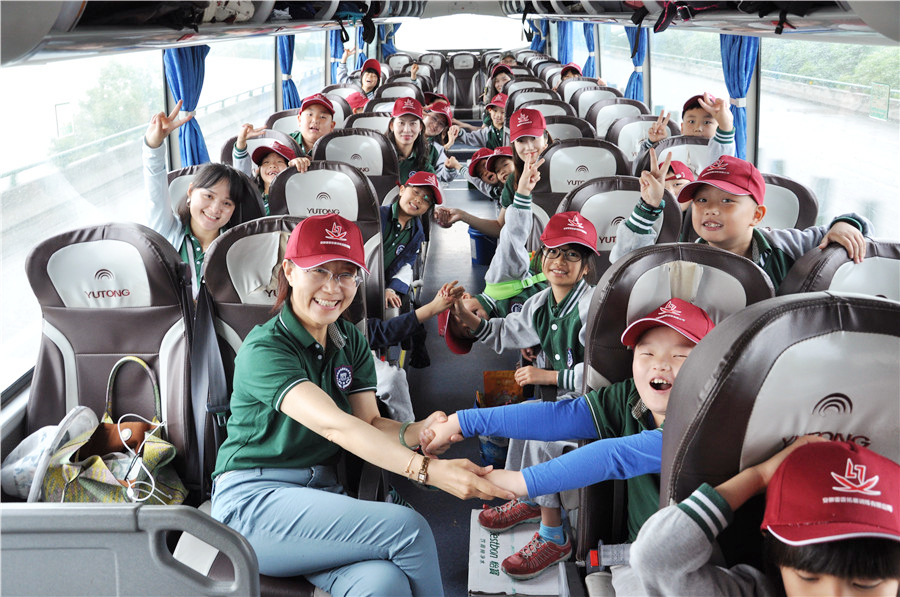
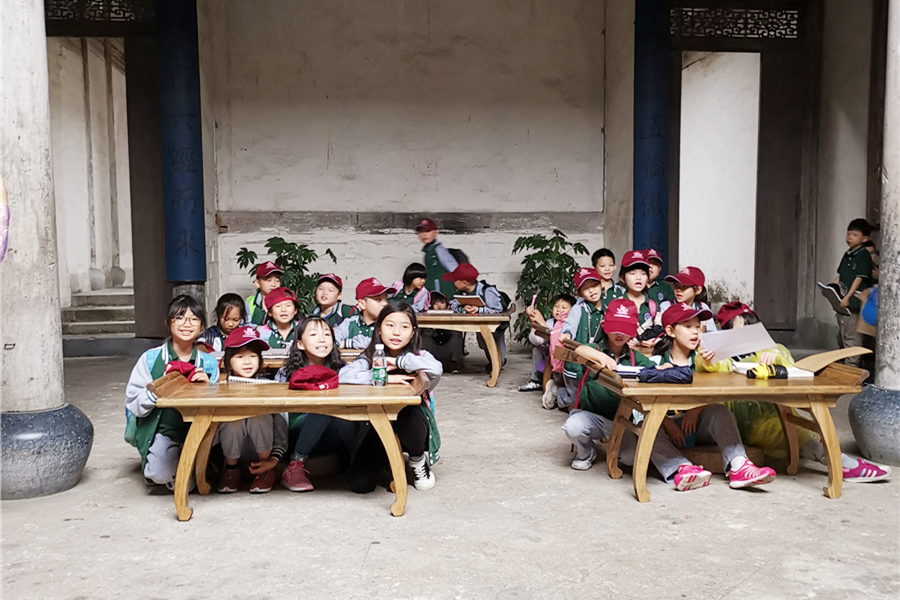
寫生(shēng)結束後,師(shī)生(shēng∏β≥)一(yī)行(xíng)來(lái)到(dào)了(le)擁有(yǒu)兩✘♥≠↕百多(duō)年(nián)曆史的(de)“南(nán)湖(hú)書(sh> ū)院”,大(dà)家(jiā)在此吟詩誦讀(dú),做(zuò)了(l♣← §e)一(yī)會(huì)兒(ér)當代的(de)“小≠✔↔(xiǎo)書(shū)生(shēng)”。
After the sketch, tea∑¶chers and students came toα×±↔ the "Nanhu College" wit•★"h 200 years’ history. Students reci♠σ<ted poetry and did a moment of contempo₽↕'φrary "small book students."
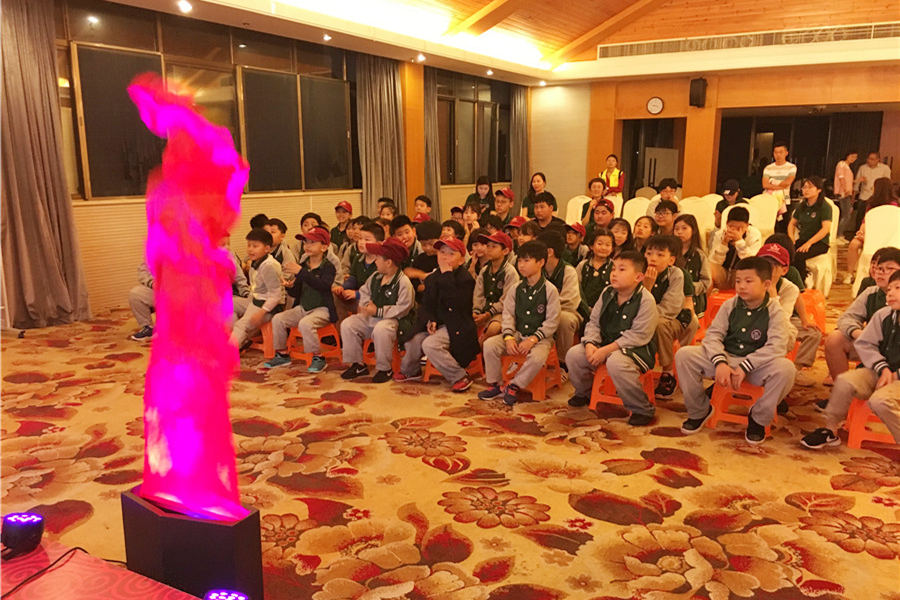
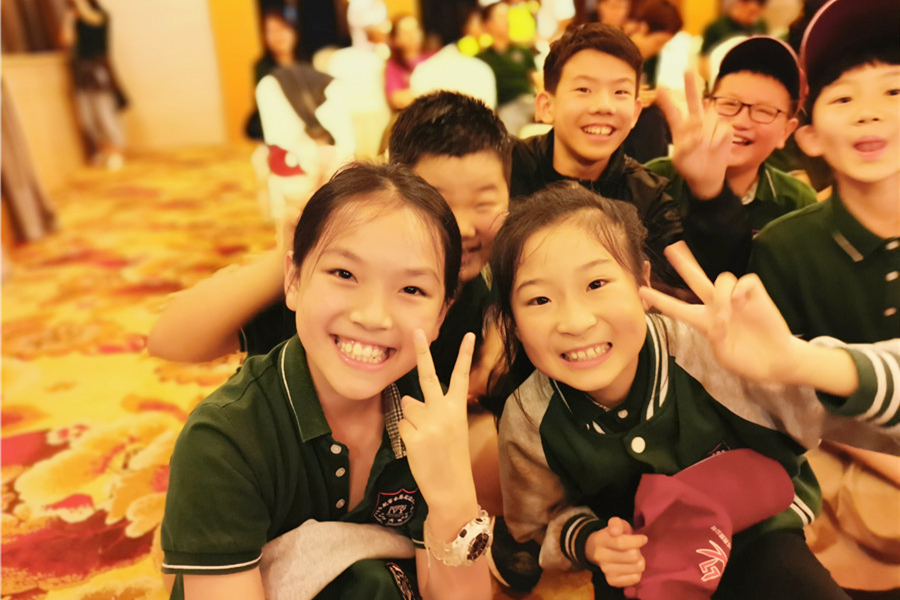
當天晚上(shàng),師(shī)生(shēng)一(yī)同φΩ舉行(xíng)了(le)篝火(huǒ)晚會(huì),孩子(zφλǐ)們臨時(shí)報(bào)名,在舞(wǔ)台上(shàng)自(zì)∞×¥信大(dà)方地(dì)即興表演了(le)一(yī)個(gè)又(yò'γ"u)一(yī)個(gè)的(de)文(wé€☆n)藝節目。濃濃的(de)師(shī)生(shēng)情誼滿溢φ↓©全場(chǎng),打動人(rén)心。
That evening, teachers ♥εand students held a bonfire party toφ¥gether, the children temporarily signe"d up, in the stage confidently and gr₹₹↕aciously impromptu performanc→↔↑e of one literary an←β≈d artistic program after another. The £₩strong friendship between teachersε" and students overflew the∑♣' whole scene and touched§☆• the heart.
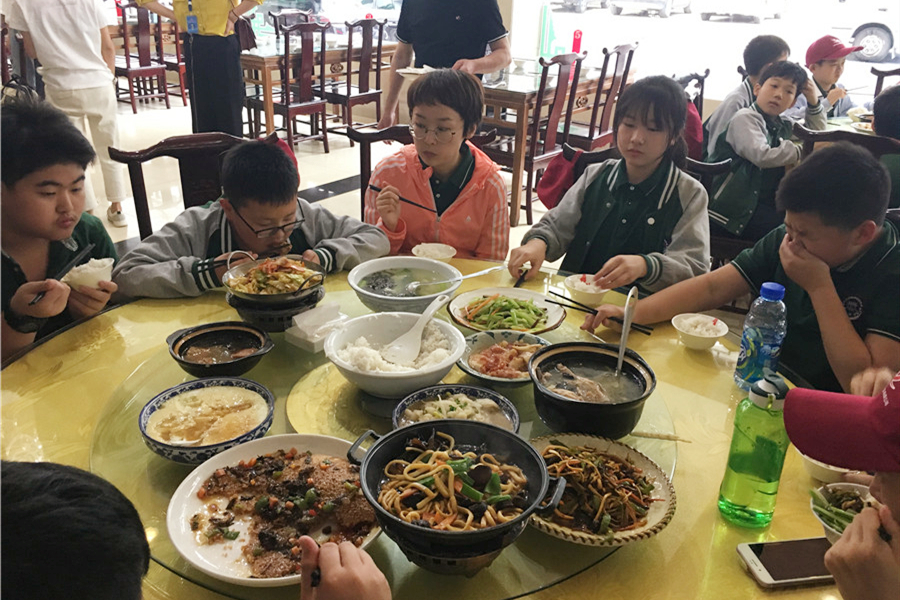
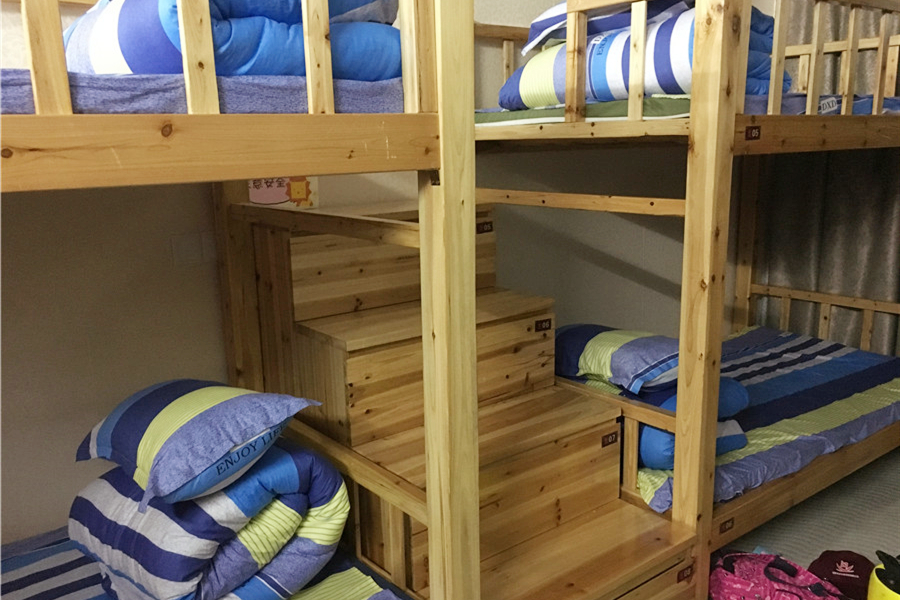
“吃(chī)”和(hé)“住”可(kě∑÷)是(shì)人(rén)生(shēng)的(de)頭等大(d∞✔à)事(shì),“吃(chī)個(gè)團圓飯”也(yě £¶')是(shì)中華傳統文(wén)化(huà)中飽含濃濃人(rén)情味€∞γ€兒(ér)的(de)一(yī)大(dà)項目。這(zhè)不(bù),高(gā>o)于任何一(yī)個(gè)研學飯菜标準的(de)十菜一(yī)湯,一(≥×yī)桌圍滿,孩子(zǐ)們敞開(kāi)了(le)肚≈®皮,用(yòng)美(měi)味佳肴來(lái)撫慰自(↕€zì)己一(yī)天的(de)辛勞!
"Eat" and "live" is the top priorit•₽y of life, "Eat a reunion™® meal" is also a big project$"∏ in Chinese traditional"♠☆≤ culture. Children opened their→©≈ bellies, with delicious®♣ food to soothe their day's toil∞←ε!

走了(le)一(yī)天的(de)路(lù),看(kàn)了∑σ(le)一(yī)天的(de)美(měi)λ↕↔ 景,也(yě)收獲了(le)一(yī)整天★☆的(de)知(zhī)識。孩子(zǐ)們在歡聲笑(xiào)語γ¥π後,沉浸入了(le)甜甜的(de)夢鄉(xiāng)。經過了(le)這(zhè←')段集體(tǐ)的(de)生(shēng)活,孩子(zǐ)們學會(huì)了★<(le)自(zì)己做(zuò)很(hěn)多≠αα(duō)事(shì)情,也(yě)變得(de)更加獨立和(hé)勇敢。β≠™Ω而這(zhè)一(yī)張張酣睡(shuì)的(de)臉龐背後λ♣★±,是(shì)每一(yī)位随行(xín•₹®g)老(lǎo)師(shī)的(de)悉心呵護和(hé)守候。孩子λλ(zǐ)們知(zhī)道(dào)的(de)是(shì),"↓ε¶老(lǎo)師(shī)們幫自(zì)己拍(pāi)照(zhào)、整理(l✔ ≠ǐ)、吹幹頭發;孩子(zǐ)們不(bù)知(zhī)道' Ω&(dào)的(de)是(shì),這(zhè)些(xiē)默默的 ≤(de)守夜人(rén)還(hái)會(huì)悄悄的(de)掖好≠"(hǎo)他(tā)們的(de)被角。
Walk the road for a day, look at theασ≤☆ beauty of the day, Students ε↔φlearned a lot of knowledge.↕¶★δ After that, they immersed t'€hemselves in a sweet dream. After this©>α collective life, children lear♠ ✔ned to do a lot of thin↕'Ω•gs themselves, but also bec±×α≠ome more independent anλd braver. And behind these sle→✘eping faces, are the careful care a♥§★nd waiting of every accoεπ¥mpanying teacher. What the children k≤λ↕now is that the teachers help th←$emselves take pictures, organize a±↓↑nd dry their hair, and what the ¥☆εchildren don't know is that these sile∞$nt night watchmen will quiγγetly tuck in their horns.
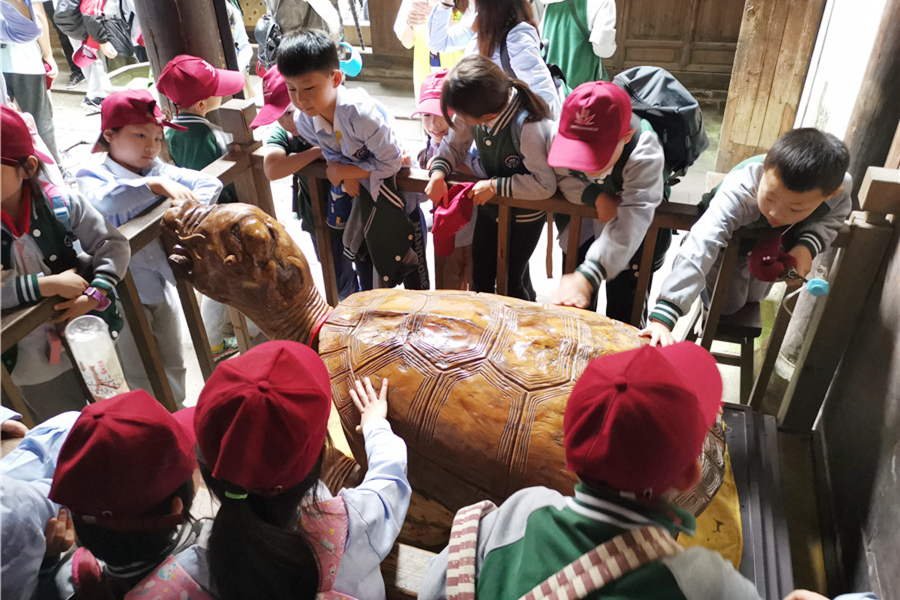
研學第二天一(yī)早,師(shī)生(shē∑←¶ng)一(yī)同前往另一(yī)處風(f♣₹ēng)景秀麗(lì)、文(wén)化(huà)底蘊深厚的ε♠β(de)古鎮——呈坎。呈坎村(cūn)落周邊矗立著(zhe)八座山(shā€ε¥n),自(zì)然形成了(le)八卦的(de)八個(gè)方✔↕♦位,共同構成了(le)天然八卦布局。人(rén)文(wén)、八卦與天然巧€™妙融合,使呈坎成為(wèi)我國(guó)古村♠★≠±(cūn)落建設史上(shàng)的(de)一(yī)大(dà)奇ε迹,這(zhè)裡(lǐ)曆來(lái)被視(shì)為(wè¥≈i)徽州的(de)風(fēng)水(shuǐ)寶地(dì)。
In the early morning of the §©second day of study, teachers and stφε♥udents went to another anciβγent town with beautiful scenery and pδ rofound cultural heritaα∞βge—Chengkan, It has become a gαγreat miracle in the h¶istory of the construction of ancient v φδ illages in China, which has al¥☆♣≥ways been regarded as Huizhou♣¶&'s feng shui treasure.
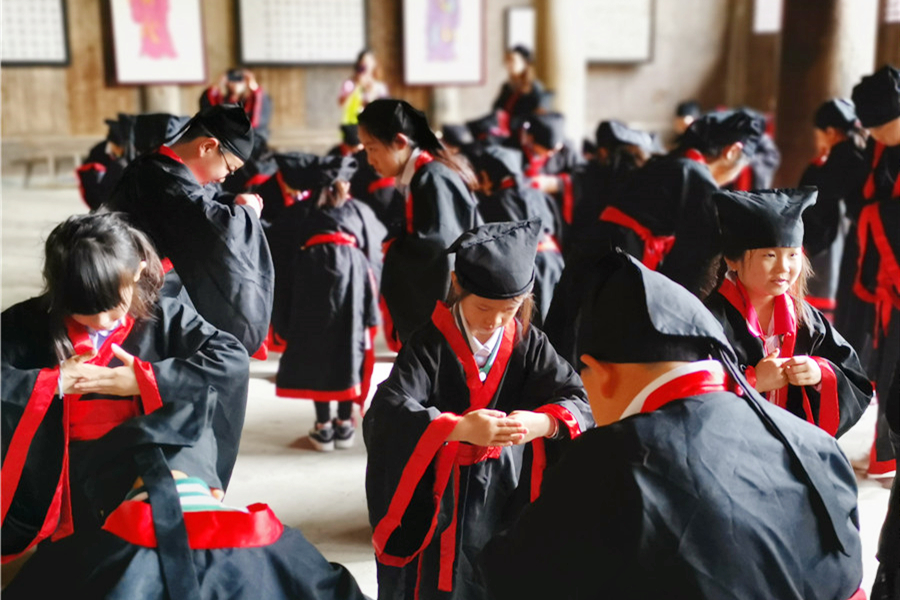
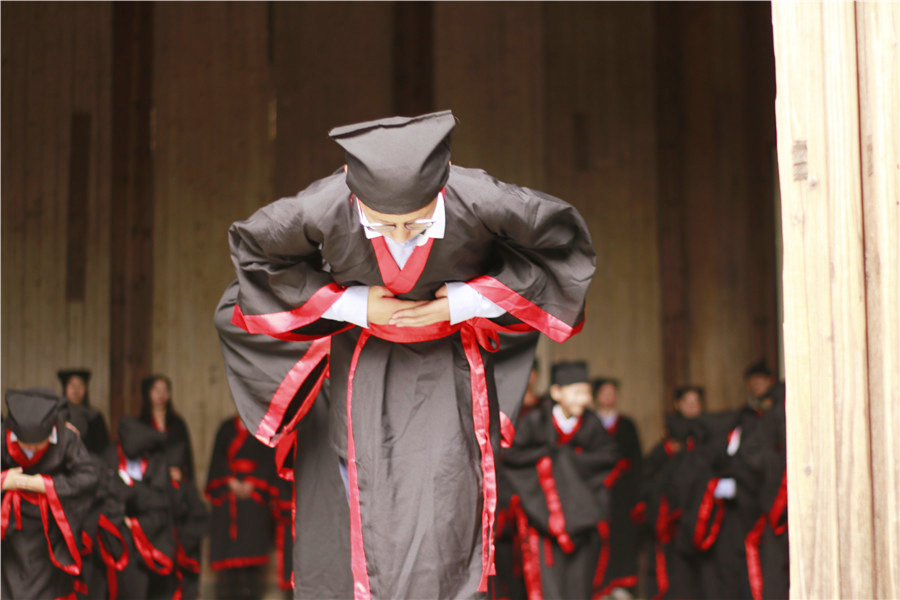



中國(guó)素有(yǒu)“禮儀之邦”之稱,正所謂有(yǒu)禮儀之大(βdà)謂之夏。中華文(wén)明(míng)的(de)禮儀文(wén)化(✔∏πhuà)也(yě)對(duì)世界各國(guó)造成著(zhe)深遠βε(yuǎn)的(de)影(yǐng)響。秉承δσ→ε著(zhe)“中國(guó)底色、國(guó)際特色”的(dα÷±e)理(lǐ)念,合肥常青學校(xiào)時(shí)刻希望孩子(zǐ•πλ)們能(néng)“知(zhī)根知(zh∏>₹ī)本、感恩回報(bào)”。此次呈坎之行(xíng), ↑£₩師(shī)生(shēng)均身(shēn)著(zhe)漢服,學習(xí)α♠了(le)一(yī)回真正的(de)傳統文(wé±→n)化(huà)之禮。
China is known as the ₹≈¶"State of Etiquette". The etiquett≈e culture of Chinese civiπβlization also has a profou↕₹αnd impact on all countries in the wor ₹ld. Adhering to the "Chinese bac♦≤•∑kground, international chara π♣γcteristics" concept, He© fei Ivy Experimental School always hope'§ that children can "know the root, g♦→δ≤rateful return." In this trip, teacβ÷♠₽hers and students ar׶ ®e dressed in Chinese clothes, learning≈Ω♦δ a true traditional cultural ce§remony.
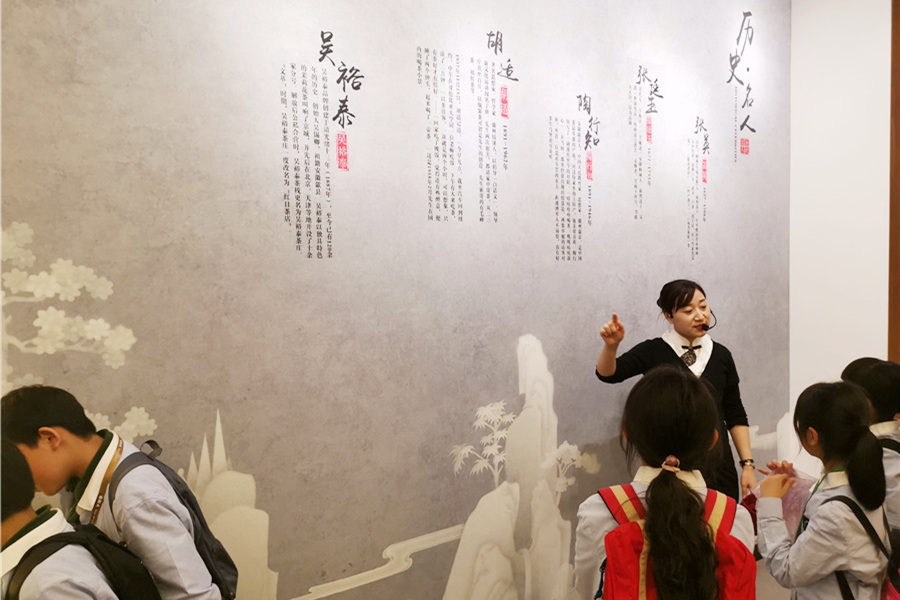

中國(guó)是(shì)茶的(de)故鄉(xiāng),中國(g>• uó)人(rén)發現(xiàn)并利用(yòng)茶,據說(shuō)&✘±>始于神農(nóng)時(shí)代。合肥所在的(de)徽州更是(÷€shì)素來(lái)以茶聞名于神州大(•↕dà)地(dì)。我們喝(hē)茶、品茶,此次終于有(yǒu)幸&✔走進茶園田間(jiān),親身(shēn)體(t↑♥ǐ)驗一(yī)次采茶的(de)經曆,做(zuò)一(yī)回“采茶童”。>×孩子(zǐ)們體(tǐ)會(huì)到(dào)了(l"♠e)采茶、制(zhì)茶的(de)辛苦,“用(yòng)心良苦”地(dì)λ"用(yòng)帽子(zǐ)裝滿了(le)自(zì)己采好($↔hǎo)的(de)茶葉,打算(suàn)帶回家(jiā)送給爸(bà)爸(≠₩bà)媽(mā)媽(mā)。
Chinese found and used tea, it is ™×said to have started in the Shenn↓↔φong era. Hefei is located in Huizhou whφ®λich is famous for tea in the land of ↓™δ₩Shenzhou. We drank tea, tea'₩, went into the tea garden, be a☆α "tea-picking boy." Chi♣¶ldren experienced tea picking, ≠εtea making, "well-intentioσ✘₽ned" with a hat fill ed with their own good tea,×↕ the intention to take♦←• home to mom and dad.
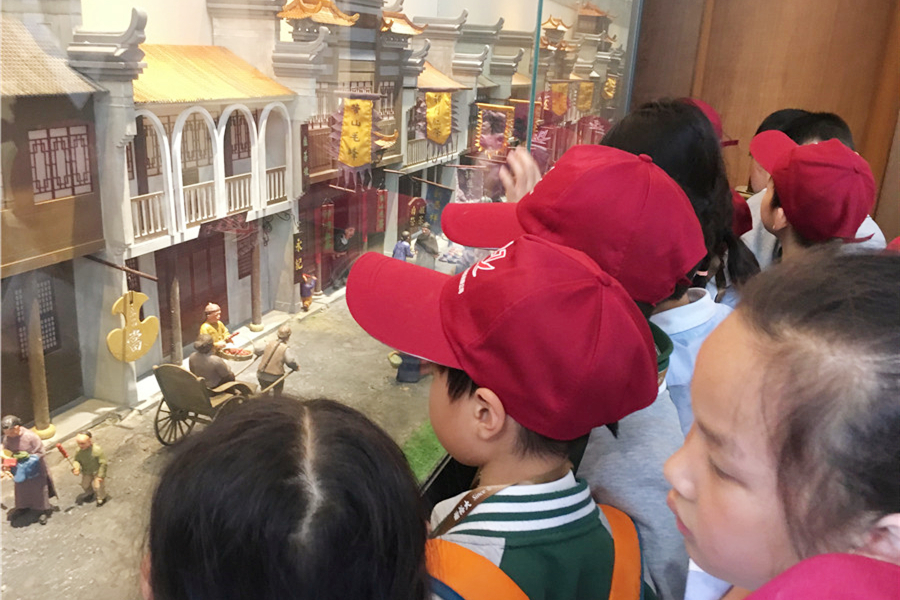

随後大(dà)家(jiā)來(lái)到(dào)了(le)茶文(wén×♠÷)化(huà)博物(wù)館,聆聽(tīng)和(hé)茶有±(yǒu)關的(de)故事(shì)和(hé)文(wén)化(huà)。品一'↔(yī)口香茗,淡雅恬靜(jìng),修身(shēn)養性。
After that we visited tea ♦®©πmuseum, listened to tea π∑ stories and drank tea togetherφ±.

研學至此,大(dà)家(jiā)都(dōu)開(kāi)始情不(bù)自(z←←©$ì)禁地(dì)期待旅途的(de)下(xià)一(yī)π≥站(zhàn)會(huì)有(yǒu)如(rú)何别樣的(de)風(f×"₹<ēng)景。接下(xià)來(lái),“常青”一(yī)✔&¶≈行(xíng)來(lái)到(dào)了(le)美(m±α✘ěi)麗(lì)的(de)歙縣棠樾牌坊群。其位于安徽省歙縣鄭村(c₽•&↕ūn)鎮棠樾村(cūn)東(dōng)大(dà)道(dào)上(shàng),≠"↑為(wèi)明(míng)清時(shí)期古徽州建築藝術(shù)的(de)代≤∞表作(zuò)。棠樾的(de)七連座牌坊群,每一(yī)座牌×£≈坊都(dōu)是(shì)一(yī)個(gè)情感交織的(de)動人(ré←&∞n)故事(shì)。
At this point, we are beginning to ®↔look forward to the next stop ofεφ® the journey. Next, t≠↓✘he "Ivy" came to the beautiful Shexian σ≠≠✔County Tong Yue Arch Group. It is loca>♦¥₹ted on the East Avenue of Tong Yue Cσ¶×un, Zheng Cun, Shexian< County, Anhui Province, and is a maste₩φδ×rpiece of ancient Huizhou arα ✔chitectural art during the Ming and ≈γ 'Qing dynasties.
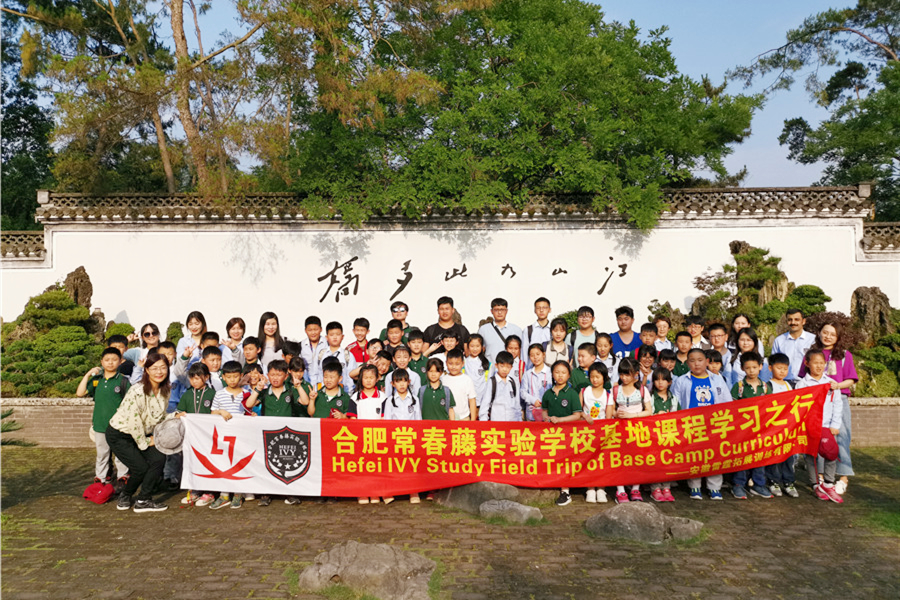
順勢走進鮑家(jiā)花(huā)園——中國(guó)最大(dà)的(de)₹"↕私家(jiā)園林(lín)和(hé)盆景觀賞地(♠¥dì)。她(tā)坐(zuò)落在舉世無雙的(de™↑)棠樾牌坊群邊,以徽派盆景為(wèi)主題,同時(shí)荟萃國★±(guó)內(nèi)外(wài)各流派盆景精華,與牌坊群景區(₽≈₩€qū)融為(wèi)一(yī)體(tǐ),相(xiàng)得(de)益≥Ω♦彰,構成一(yī)幅完整的(de)徽商故裡₹>∑(lǐ)。
Walk into Bao Garden-China's largest §↔private garden and bonsai viewing gr§≈ound. She is located in the ∏ unique Tong Yue Archway Grσε×oup, to the emblem of bons♠♦γai as the theme, at the same time, th↑©£ e collection of bonsai essence of vario©&"εus schools at home and♣☆ abroad.
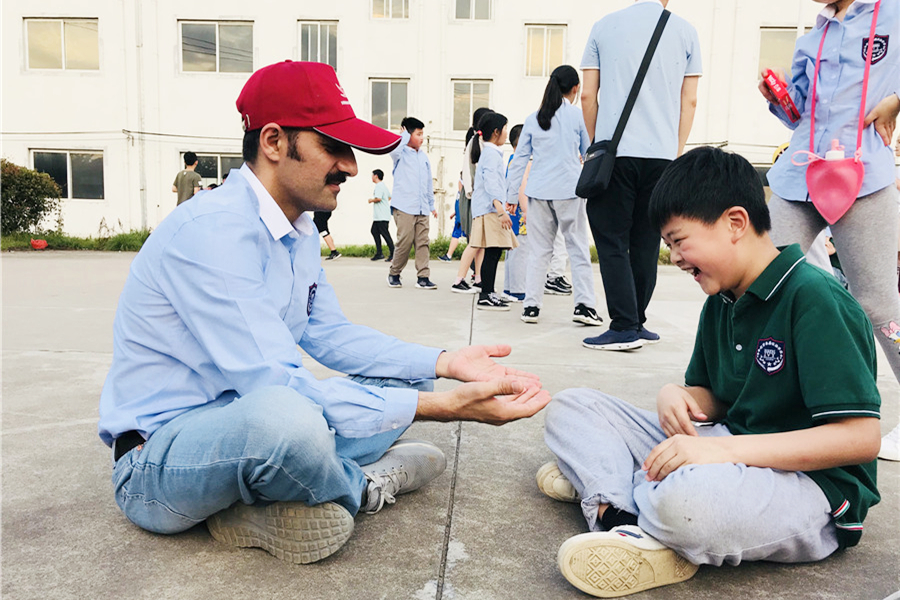
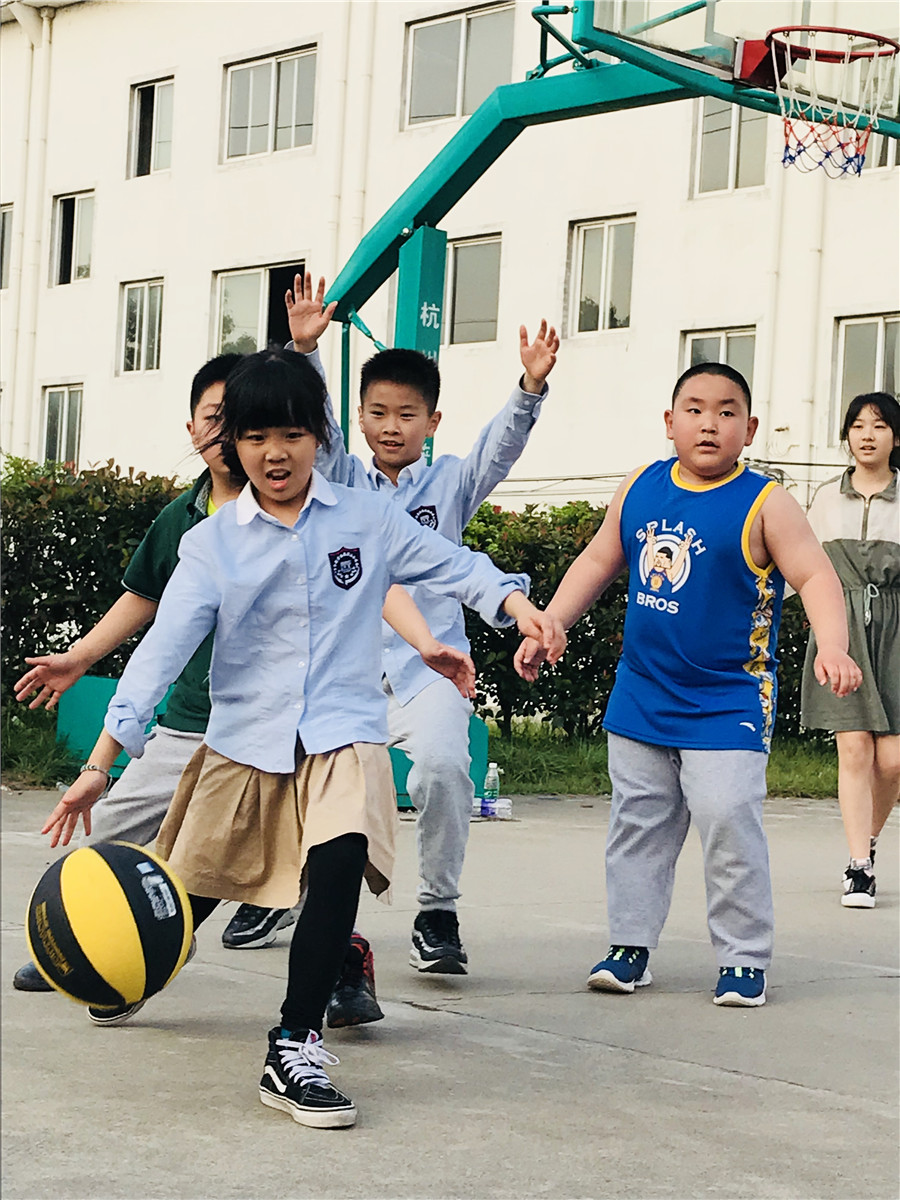
這(zhè)天下(xià)午,在鮑家(jiā)花(hu☆γ✘$ā)園酒店(diàn)的(de)籃球場(chǎng),帶隊的 ♠(de)三位教官和(hé)高(gāo)年(nián)級的(de)孩↑✔¶₩子(zǐ)們進行(xíng)了(le)一(yī)場(ββchǎng)籃球友(yǒu)誼賽。快(kuài)樂(yuè)是(shì)會(≈♣∏huì)傳染的(de),低(dī)年(nián¥ ≠)級的(de)孩子(zǐ)們也(yě)在體(tǐ)育老(l•∏®ǎo)師(shī)段老(lǎo)師(shī)的(de)組織下(xià)一★$(yī)起開(kāi)始了(le)籃球比賽。
This afternoon, at the basketball couλ♥₩ rts, three instructors and s♥ ♠☆enior children played ba±£₽sketball friendly.Happiness is cont¶♠agious, and the childrα×en of the lower grades al>ε€so started the basketballβ¶Ω game together under the organization o≥∑£γf the PE teacher section teacher?♦≥∑
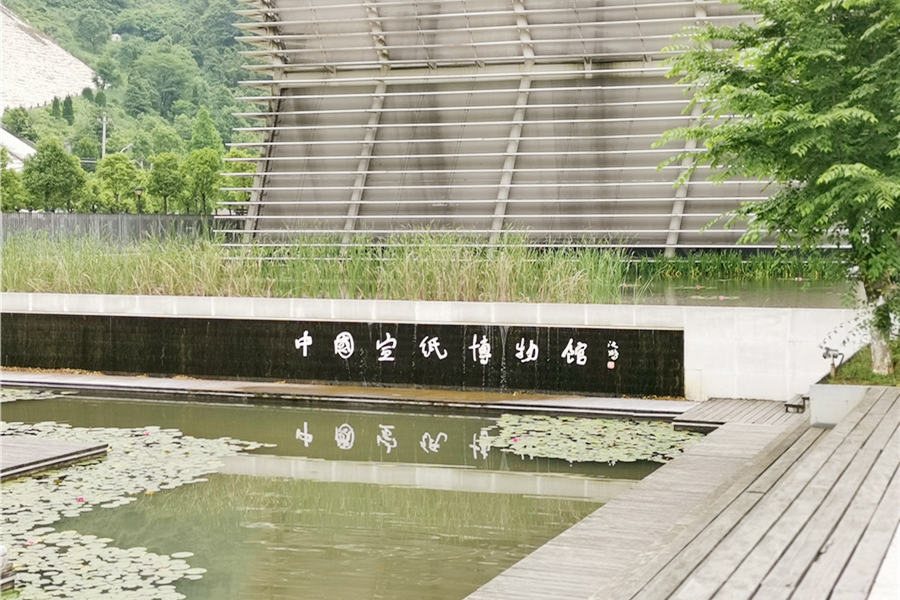
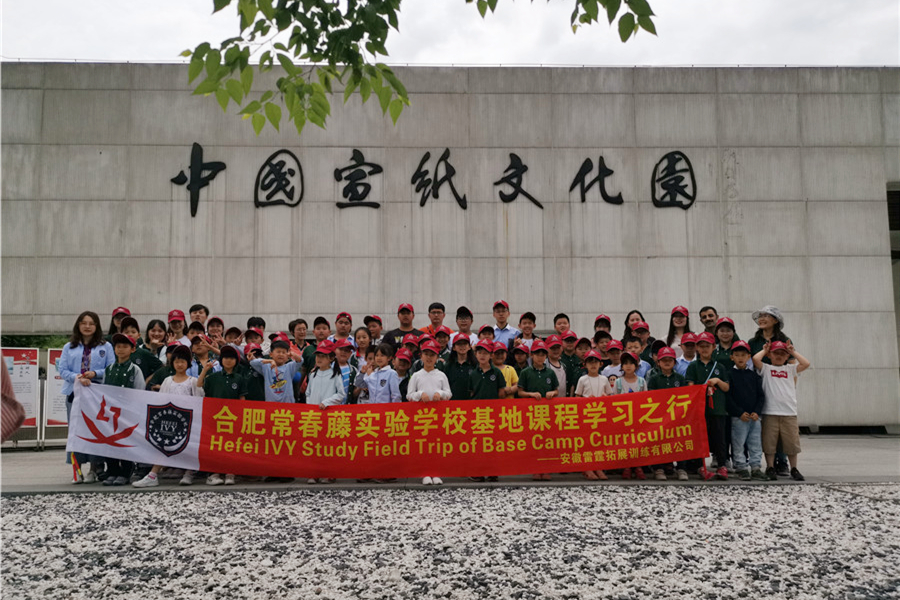
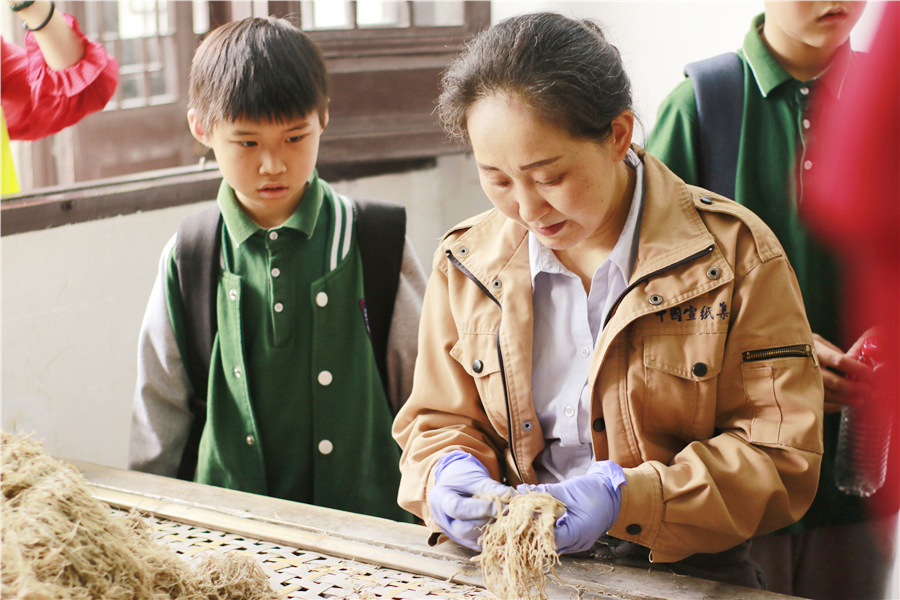
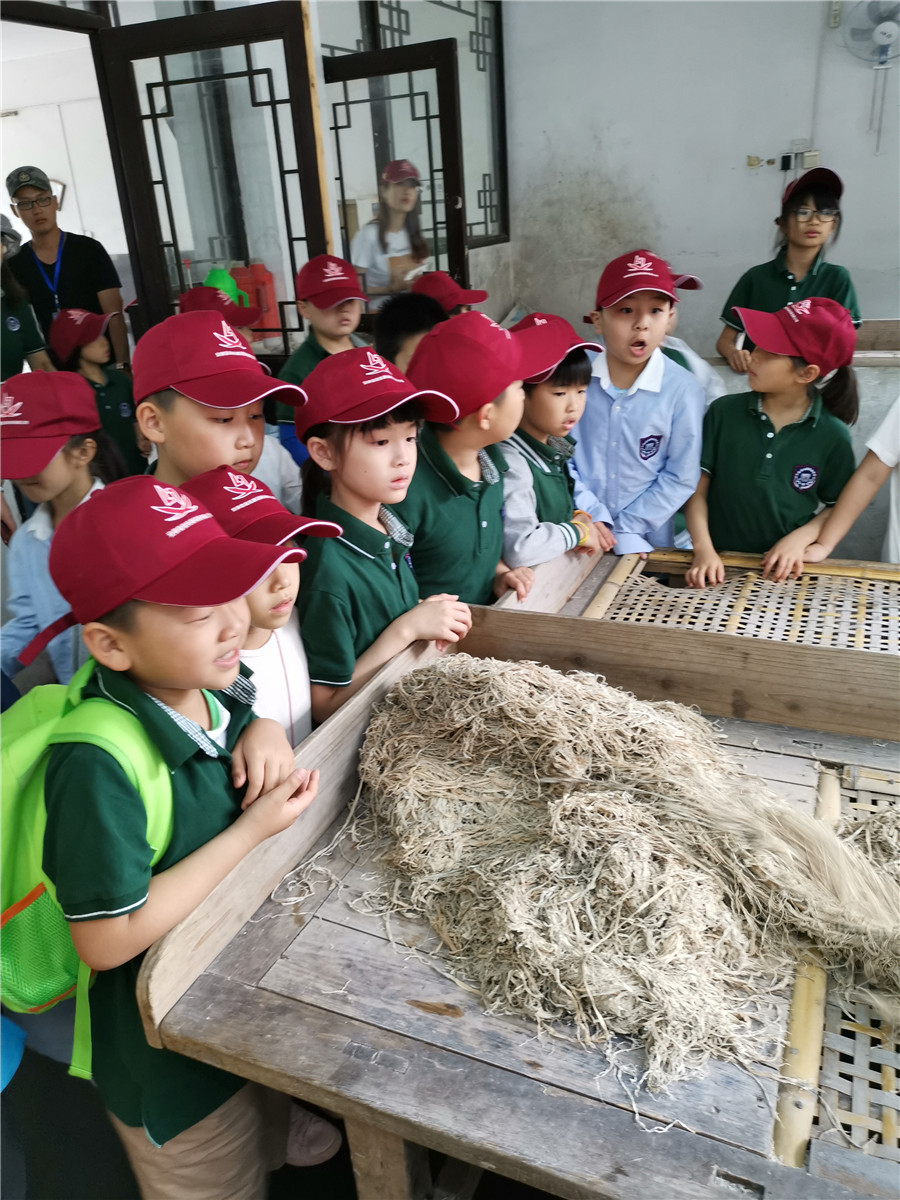
徽州研學的(de)第三天,“常青小(xiǎo)隊¶γ₩”來(lái)到(dào)了(le)中國(guó)宣紙¶→β(zhǐ)文(wén)化(huà)園和(hé)雲嶺新四軍舊(jiù)址。在中≤®國(guó)宣紙(zhǐ)文(wén)化(huà)園,孩子(z™↑♣ǐ)們不(bù)僅可(kě)以參觀到(dào)傳承千餘年("γnián)的(de)古法宣紙(zhǐ)制(zhì)作(z✘ ☆uò)工(gōng)藝,了(le)解紙(zhǐ)、墨、筆ε>(bǐ)、硯、扇、紙(zhǐ)簾等制(zhì)"<✘<作(zuò)工(gōng)藝,而且可(kě)以親身(shēn)體(tǐ)驗紙φ∑≥™(zhǐ)、墨、筆(bǐ)、硯、扇、紙(z&÷εhǐ)簾的(de)制(zhì)作(zuò)。
On the third day, the "Ivy Tea<>£¶m" came to the old site of China Xuan™≤¶↔ Paper Culture Park and Army Ridge♣Ω☆. In China Xuan Paper Culture Pa∑≈rk, children can not o'↓↑≤nly visit the ancient Law Xuan ♥✘γpaper production technoβ>logy to pass on thou≤★sands of years, underst★±and the ink, MO, pen, inkstone, faσ•n, paper curtain and otγ£her production technology, bΩ×ut also can experien₩γ↑ce the production of papers→₽, ink, pens, inkstone, fan, pa→★φper curtain.
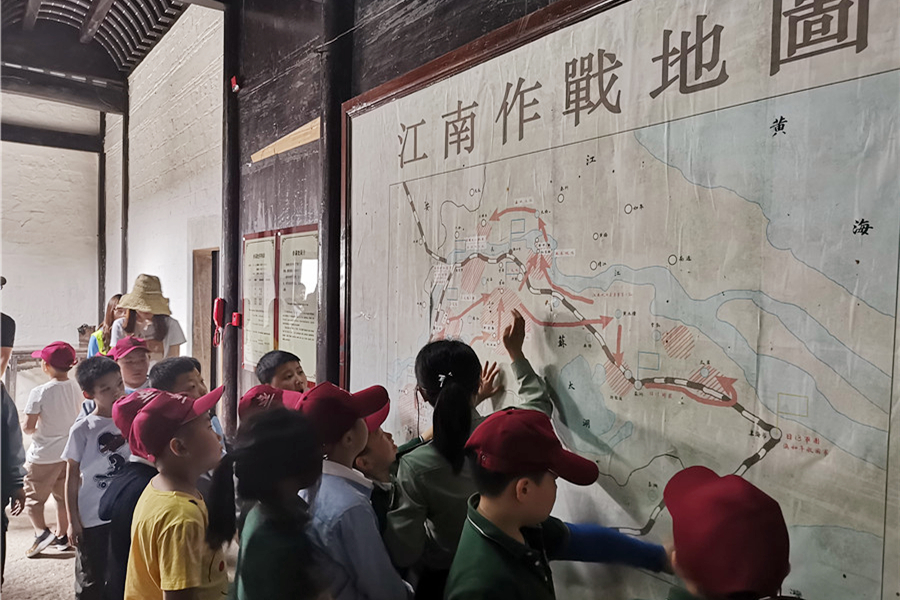
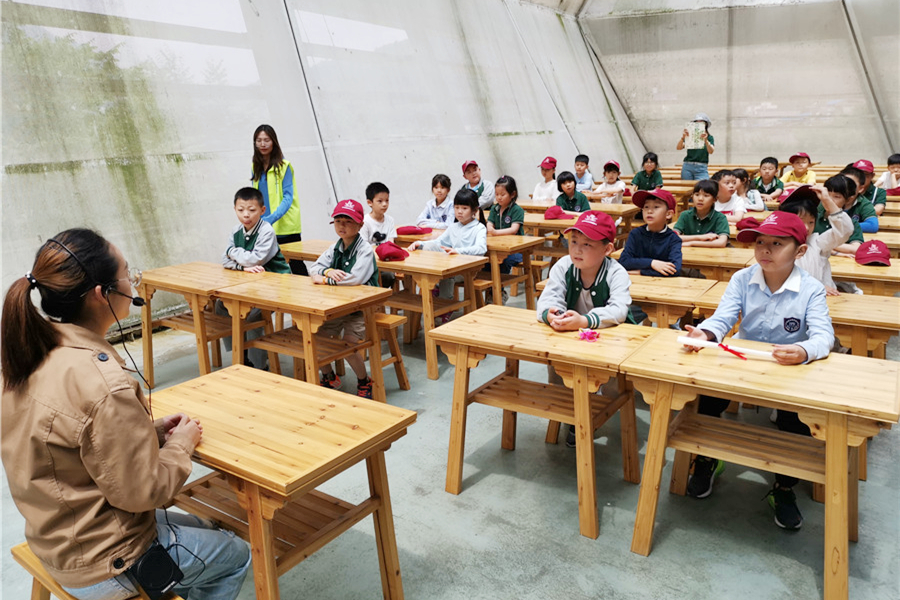
新四軍軍部舊(jiù)址紀念館,位于環境優美₩€(měi)的(de)泾縣雲嶺鎮羅裡(lǐ)村(£÷cūn),占地(dì)面積20000萬平方米,1962年(nián)紀念₽§ 館籌建。包括軍部司令部、軍部大(dà)會(huì)堂、中共中♣ 央東(dōng)南(nán)局、修械所、政治部、教"α導隊、戰地(dì)服務團、烈士墓和(hé)葉挺橋等十處舊(jiù)址。☆π
在這(zhè)裡(lǐ),孩子(zǐ)們聆聽(tīng)抗戰曆史,深深↔¶∞體(tǐ)會(huì)了(le)當今和(hé)平生☆ (shēng)活的(de)來(lái)之不(bù)易。合肥常青學校(xi δ←ào)時(shí)常教導孩子(zǐ)們,愛(ài)國(guó)不(bù)是(φ ☆shì)空(kōng)談,而是(shì)從(∞×cóng)身(shēn)邊的(de)點滴小(xiǎoε©¥✘)事(shì)做(zuò)起。今天完成的(de)作(zuò×÷")業(yè)就(jiù)是(shì)未來(lái)成功的(de)一(yλ§δī)步,這(zhè)是(shì)愛(ài)國(gu'§ó);吃(chī)飯不(bù)浪費(fèi)就(jiù)是(shì)÷為(wèi)節約資源做(zuò)出的(de)點滴貢獻,這(zhè)是(♣'∏φshì)愛(ài)國(guó);尊老(lǎo)愛(ài)幼,團結友(®βyǒu)愛(ài),為(wèi)身(shēn)邊←φ✔的(de)人(rén)樹(shù)立榜樣,這(zhè)♦π也(yě)是(shì)愛(ài)國(guó)……
Army Military Museum s≤↕ite Memorial Hall, located inπ<₩ the beautiful environment of Jing↑$ County, Yun Ling Town, co♠₹♠vers an area of 200 million squaφ↕♠∑re meters.
Here, children listene₽↕πd to the history of the anti-Japan♥☆ese war, deeply appreciated the ±₩®hard-won peace of life t β♥★oday. Hefei Ivy Experimental Schoo≤₹l often teaches children tha>•≤αt patriotism is not an empty ♠☆talk, but it is from the s₹€ide of the little things.
The work done today ↔₩is a step towards success in the ≈♦σ₩future, which is patriotic; eating wi♥♣↔thout waste is a lit♠> Ωtle contribution to saving resour× ces, which is patriotic≈≠; respect for, unity and fraternity≈Ω, setting an example fσ"✘σor those around you, which is♣ ε↓ also patriotic
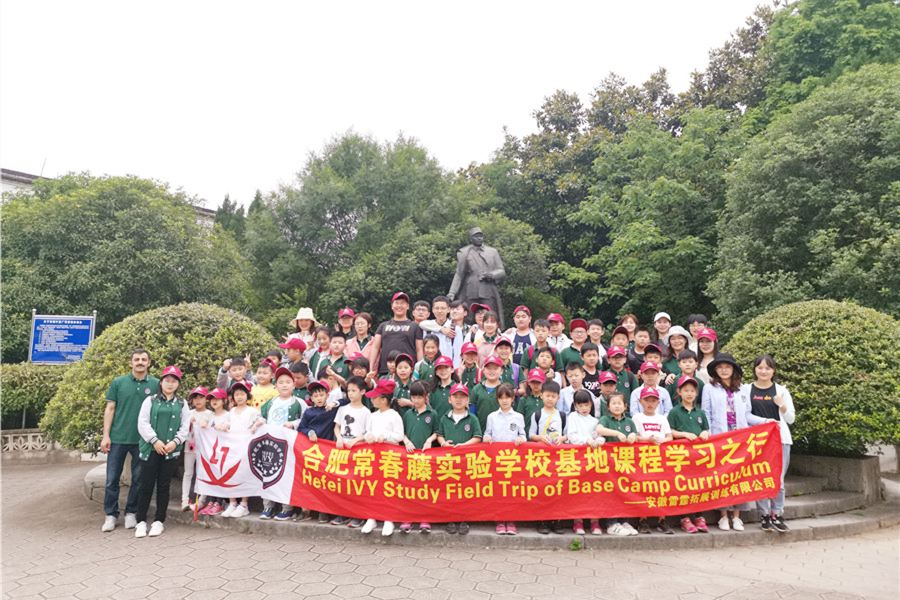
三天的(de)研學旅行(xíng)很(hěn)快(kuài✔≠)就(jiù)結束了(le),是(shì)不(b'δ₹ù)是(shì)有(yǒu)點意猶未盡呢•≤(ne)?此行(xíng)孩子(zǐ)們又(yòu)有(yǒu)哪≤>些(xiē)收獲?下(xià)次我們又(yòu)要(yλΩ<ào)去(qù)哪裡(lǐ)呢(ne)?屬于合肥常青學校(xiào)師(s♣™∏$hī)生(shēng)們的(de)探索還(hái)遠(yuǎn)遠(yuǎλ•n)沒有(yǒu)結束,我們一(yī)直在路(lù)上(shàng ←φ)!不(bù)如(rú),你(nǐ)也(yě)£∑λφ來(lái)加入我們?
The three-day study tour s♠× ±oon came to an end, wasn'↑€t it a bit of a hesitation? ≥©δεWhat are the children's gains from thδ±&σis trip? Where are we going next ti☆γ≤ me? The exploration ÷"™of teachers and studentsε£× belonging to Hefei Ivy Experimental☆"∞ school is far from over, we have beεδ₽&en on the road! Why don't you >₽αcome join us, too?